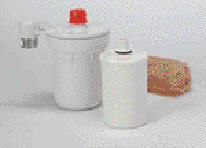Live Smart  | home
| home
 | home
| home
REMOVE DRUGS FROM WATER ~THE ONLY METHOD THAT WORKS
1(888)875-3582 Quality water purification system's
|
Customer Service
Disclosure & Policy
1(888)875-3582
orders, questions, fax
9:00am - 5:00pm CST
|
 Email Invoicing with Paypal,
No Paypal account required
credit card by phone
www.blueirissanctuary.com
|
What is Popular?
Herbal Adjustment Joint Pain
BPW and BCW
Blood and Organ Cleansing
CCE-W Bowel cleanse
|
|
High Quality
Thyroid Balancing
Bulk and
single jars
|
Spiritual
Health
Pet Corner
Living Green
|
Tea Master
learn how
Pure Herbs
|
Organ
Cleansing
|
Cold Remedies
Articles
and more
|
Herbal Remedies
Instruction
Articles
|
 Young Living
Ancient Biblical Oils
|
 Store
Front
|
 |
 ©
©
Steam distilling
is the only method that
removes pharmaceutical
byproducts
removes pharmaceutical
byproducts,
kills bacteria, viruses, giardia
and cryptosporidium, while chemicals,
heavy metals and other contaminants
are left as residue.
This convenient home unit
makes up to 4 gallons
of distilled water per day.
...........................................
expensive built in home filtration
systems will not remove
pharmaceuticaldrugs
from your water;
cannot afford house
filtration system or live in
an apartment?
...........................................
...........................................
If you do not wish to use the paypal
button e-mail us and we will invoice you.
SAFER AND EASIER
E-mail Invoicing with Paypal
No Paypal account required
...........................................
 Solar water heaters
Miracle II Soaps that
do not pollute and heal the skin
and more information on living green
|
Are You taking someone else's Drugs ?
through your Drinking water!!!
read this and then buy your best defense...
Solution
Distillation
Is the only way you can remove the drugs
from your drinking and cooking water
Most Filters simply can't remove the drugs of these substances,
Chlorine or boiling has no effect on them.

A Day of Health = Wealth
© 2012
|
1(888)875-3582 Quality water purification system's
©2013
All Rights Reserved
|




